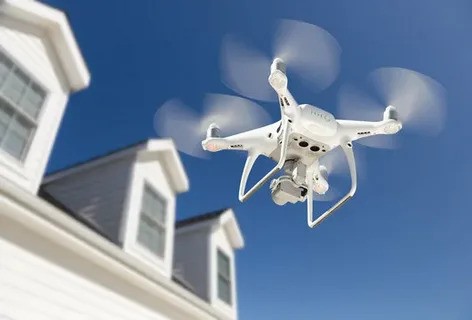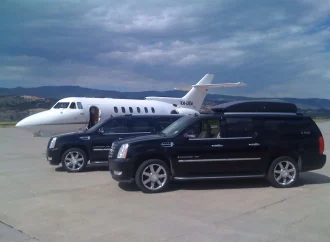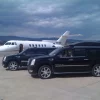In the fiercely competitive realm of commercial real estate, compelling visuals are no longer an option but a strategic imperative. The ability to showcase a property’s scale, context, and unique features from a captivating aerial perspective has become a game-changer. This is where “commercial real estate photography,” particularly when augmented by drone technology, truly shines.
In the fiercely competitive realm of commercial real estate, compelling visuals are no longer an option but a strategic imperative. The ability to showcase a property’s scale, context, and unique features from a captivating aerial perspective has become a game-changer. This is where “commercial real estate photography,” particularly when augmented by drone technology, truly shines. Understanding the nuanced factors that influence “real estate drone photography pricing” is crucial for agents, developers, and property owners looking to make a significant impact and attract serious investors.
The Specialized World of Commercial Real Estate Photography
Commercial real estate photography operates on a different plane than its residential counterpart. While home photography aims to evoke a sense of warmth and personal connection, commercial visuals focus on conveying functionality, investment potential, and strategic location. This means capturing not just the building itself, but also its surrounding infrastructure, access points, parking facilities, and how it sits within the broader commercial landscape.
The challenge lies in translating a vast industrial complex, a bustling retail center, or a towering office building into a concise yet comprehensive visual narrative. This often requires meticulous planning to highlight architectural design, operational flow, and the property’s relationship to key amenities or transport links. Traditional ground-level photography, while essential for interiors, often falls short in conveying the full scope and context of large commercial properties. This is precisely where aerial photography becomes indispensable.
The Unparalleled Advantage of Drone Photography in Commercial Real Estate
Drone technology offers a transformative solution for commercial real estate photography. By providing a bird’s-eye view, drones can capture the entire property and its extensive grounds, illustrating its overall layout and critical external features with precision. For an industrial park, drone shots can showcase the vastness of the warehouses, the efficiency of loading docks, and truck accessibility. For a commercial complex, aerial views emphasize the scale of parking lots, tenant visibility, and the flow of pedestrian and vehicle traffic.
These elevated perspectives provide potential buyers and investors with a holistic understanding of the property’s geographical advantages and its operational potential. The ability to obtain sharp, stable, and high-resolution images and videos from unique angles sets a listing apart, immediately grabbing attention and fostering a professional image. Drone photography ensures that every aspect of a commercial property, from its strategic location to its expansive design, is presented in the most compelling and informative way possible, enhancing engagement and driving interest.
Decoding Real Estate Drone Photography Pricing
When budgeting for this powerful marketing tool, it’s essential to delve into the factors that influence real estate drone photography pricing. The cost is not simply for the drone pilot’s time, but an investment in specialized equipment, technical expertise, safety protocols, and the crucial post-production work that transforms raw footage into polished, high-impact visuals. Prices can vary widely based on several key elements:
- Property Size and Complexity: This is perhaps the most significant factor, especially for commercial properties. Larger commercial properties, expansive estates, or those with complex layouts inherently demand longer flight sessions, more intricate planning, and often require multiple battery changes or even several site visits. This increased time and effort directly translate into higher fees compared to smaller residential shoots. For instance, while a basic residential drone photography package might start around $149 for properties under 2000 sq. ft., larger commercial projects will certainly command a higher investment.
- Pilot Experience and Equipment Quality: Highly experienced drone photographers with a proven track record of delivering exceptional commercial imagery often charge more. Their expertise ensures optimal shot composition, adherence to safety regulations, and the ability to navigate challenging environments. Furthermore, the use of professional-grade drones with superior cameras and advanced stabilization systems guarantees higher image quality, contributing to the overall cost.
- Scope of Deliverables and Post-Processing: The number of aerial photos and videos requested, the length and complexity of any video edits, and specific post-processing requirements (e.g., color correction, image enhancement, property line overlays, virtual tours) all impact the final price. Additional post-shooting processing fees, which can range from $50 to $200 per picture for detailed editing, are a common consideration.
- Location and Logistics: Properties in densely populated urban areas or those near restricted airspace (e.g., airports) may incur additional permit fees and require more extensive flight planning, impacting costs. Travel distance to the property also plays a role.
The understanding here is that investing in professional aerial drone photography for commercial real estate is “worth it.” It significantly boosts a listing’s appeal, attracts more attention, and provides long-term value by showcasing properties with stunning views and increasing online engagement.
The Value Proposition
For commercial properties, where transactions often involve substantial investments, the cost of real estate drone photography is a minimal outlay compared to the potential returns. High-quality drone imagery ensures that a property makes a strong initial impression, stands out in competitive markets, and effectively communicates its unique selling points. This investment not only helps to secure faster sales but can also contribute to achieving higher selling prices by vividly demonstrating the property’s full potential and value.
Conclusion
Commercial real estate photography has been irrevocably transformed by drone technology, offering an unparalleled visual narrative that captures the essence and potential of large-scale properties. While real estate drone photography pricing is influenced by various factors—from property size and project complexity to pilot expertise and deliverables—the strategic investment in these aerial visuals is an undeniable advantage. For commercial properties, drone photography is not just an enhancement; it’s a critical marketing tool that ensures maximum visibility, engages potential investors, and ultimately drives successful transactions in a competitive market.






















